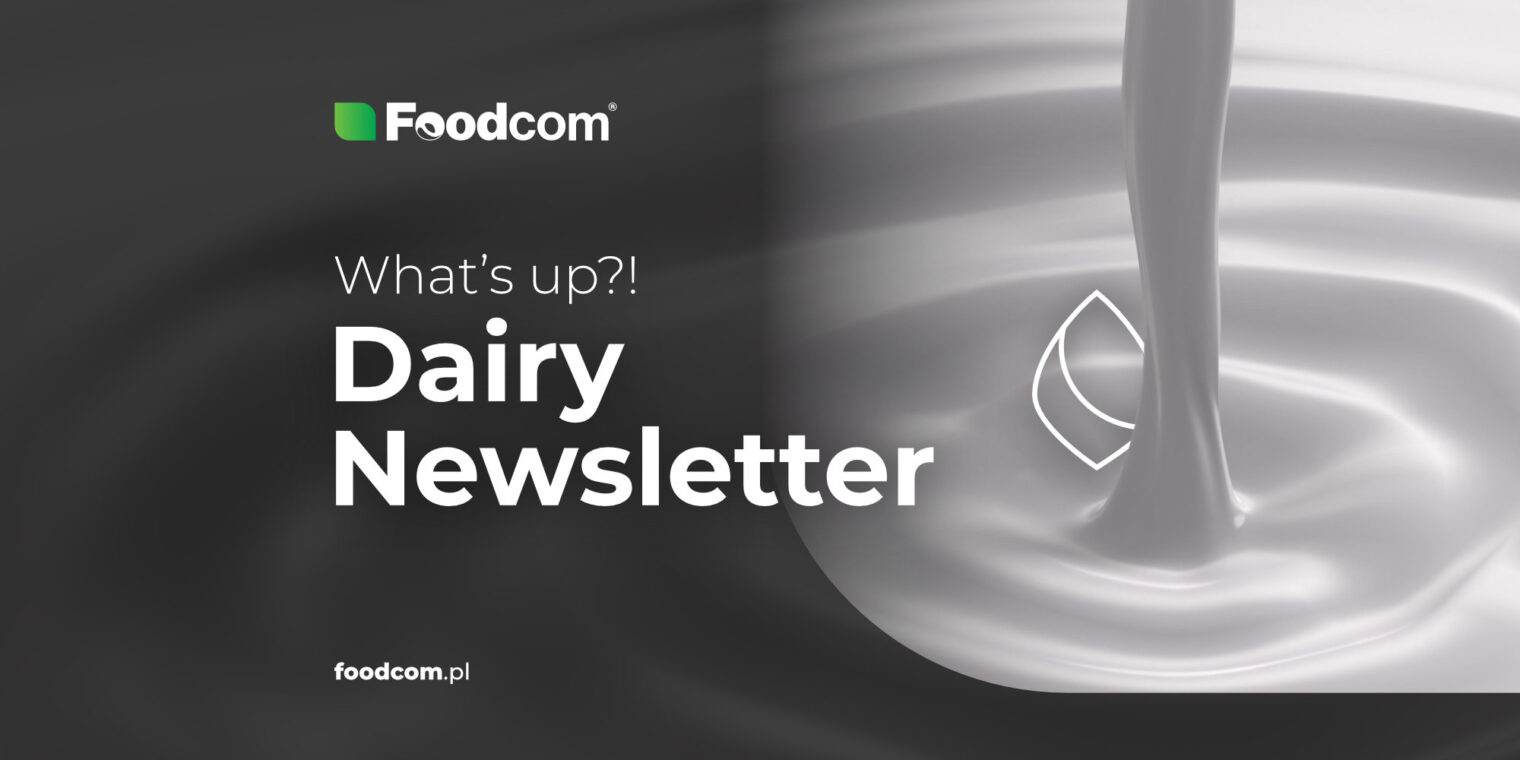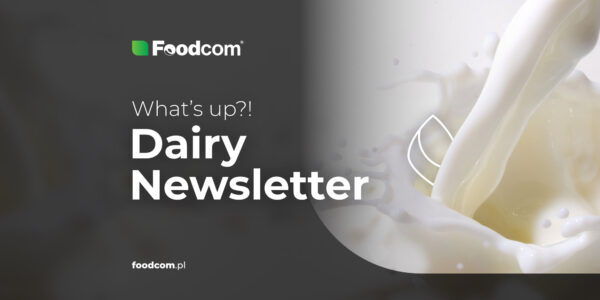Hello Partners!
We can officially say that the summer season is coming to an end. It’s the last moment to enjoy an ice cold frappe, but already sitting at the desk in your beloved office. One can clearly see that the market is waking up as the participants are full of energy to finally make some really good deals.
We were surely not asleep during this season, making business relentlessly, so that we can provide you with an overview about what has happened during the last month. Keep on reading and stay in the loop, because the hot season is just starting!
Best of luck!
PRODUCTS
SMP
SMP prices in Europe are stable. Many buyers returned from holiday, but one can hear voices that stocks for Q4 are more or less secured. More people ask for quantities to cover the beginning of 2024. Spot transactions are limited as price expectations of both parties don’t match. The production is steady, the supply is easily covering needs, so what we are facing is a pretty stalemate.
FCMP
The prices of Full Cream Milk Powder on the European market are higher than those from outside the Old Continent so there is not much sense in trying to export the goods. Inventories are secure enough to meet the demand, but the interest is not in full swing (yet?). The seasonal decline might influence the situation, but as for now, there is not much change on the horizon.
SWP
The abundance of whey on the market does not induce any emergency from the buyers. Moreover, (higher, but still not at a desired level) exports also create a sense of calmness. The cheese production is steady, and even though there is bigger demand for feed, it’s not enough to stir up the situation.
Butter
The demand for butter cubes picked up after summer holidays, but blocks are still waiting for their moment. However, the cream prices have risen lately, so there might be a chance that the price of butter will also go up. As there is no urgency, buyers prefer to wait or buy the old product rather than pay higher.
Liquids
In Western Europe, milk production is experiencing a seasonal decline, exacerbated by occasional hot spells that are causing a further decrease in output levels. However, industry reports indicate that milk supplies are generally sufficient to meet most processing requirements. Similar to their Western counterparts, Eastern European milk production is also following a seasonal decline pattern. Nevertheless, some countries, such as the Czech Republic, Poland, and Romania, have consistently demonstrated higher monthly milk production in 2023 when compared to the same period in 2022.
Gouda
An exception to this is cheese, as certain varieties are in high demand and experiencing limited availability. Cheese demand in the food service sector is mixed, with inflation and weather conditions negatively impacting sales, while strong demand persists in southern European vacation destinations. Retail demand for cheese remains robust, and cheesemakers are meeting current demand, although strong demand is causing limited availability in warehouse inventories. Stakeholders report an inability to offer spot loads of cheese to purchasers seeking additional supplies.
WHAT ELSE?
EUROPE
IRELAND
Irish dairy farmers in Cork are facing a severe financial crisis due to ongoing reductions in milk prices, with nearly half a billion Euros in income lost this year, according to the Irish Creamery Milk Suppliers Association (ICMSA). The decline in milk prices over the past year is significant, with Dairygold paying its milk suppliers 55.5 cents per liter in June of the previous year and now only offering 36 cents per liter. This represents a year-on-year reduction of over 35%. The ICMSA’s analysis reveals that Cork has been particularly affected, with a 38.7% reduction in milk revenues in 2023 compared to 2022, resulting in a €491.5 million decrease. The overall impact is described as “astounding” and is expected to have serious consequences for the rural economy in the coming years as farmers tighten their budgets and cut spending.
DENMARK
Danish dairy company Arla has adjusted its full-year sales forecast downwards due to the impact of inflation and rising living costs in Europe. Consumers are opting for fewer or cheaper dairy products to manage their expenses. While Arla experienced increased sales by value in the first half of 2023 due to higher prices, the volumes of their premium brand, Lurpak butter, dropped by 6.6%, and sales of Castello cheese decreased by 4.4% compared to the previous year. Arla’s first-half earnings before interest and tax declined by 36% to 161 million euros ($174.19 million). The company attributed these challenges to inflationary pressures, which are leading consumers to favor discount channels and private label products. Consequently, Arla has revised its 2023 sales outlook to a range of 13.2 billion euros to 13.7 billion euros, down from the previous estimate of 13.6 billion-14.2 billion euros in February, citing ongoing market uncertainty.
ASIA AND OCEANIA
CHINA
China is on track to become the world’s third-largest cow milk producer this year, despite being the largest dairy importer due to its growing population and per capita dairy consumption. Despite this increase in production, China is anticipated to continue being a major dairy importer, with imports likely to reach 15 million metric tons LME by 2032. The report notes that China’s self-sufficiency rate in dairy hovers between 70% and 80% and is unlikely to increase substantially, as domestic production may not meet rising demand in the long term due to factors such as production costs, land availability, and government policies.
NEW ZEALAND
Fonterra’s recent payout cut coincides with rising costs. Dairy operating expenses surged to $8.16 per kgMS in 2022/23, while Fonterra’s payout dropped to $8.20 from $9.30 in the previous year. This led to a $2.0 billion drop in industry revenue. Fonterra further reduced its 2023/24 payout forecast due to weaker Chinese demand, resulting in a $2.7 billion revenue loss. Although costs are expected to ease slightly, they will still surpass revenue. The sector is adapting to make more with less, as seen in reduced cow numbers but steady milk solids production since 2015.
AMERICAS
USA
In July, US butter and cheese inventories saw reductions, with butter holdings down by 18.2 million pounds (5.2%) from June. Total cheese inventory decreased by 21.7 million pounds (1.4%) from June. Dairy cow culling continues to be incentivized, with 6.1% more cows sent to slaughter in July compared to the previous year. Overall, high summer temperatures are impacting the dairy industry, affecting cream supply, but butter output remains steady to reduced. Dairy exports are bearish due to domestic price competitiveness.
BRAZIL
In Brazil, the value of raw milk for industries has been consistently declining, with July marking the third consecutive drop. The average price reached R$2.4142 per liter, reflecting a 5.69% decrease compared to June. In a year-on-year comparison to July of the previous year, the decline in raw milk prices was a significant 35%. This drop in milk prices stands in contrast to the historical pattern in the sector, where prices typically rise during the off-season due to reduced production caused by weather conditions. However, in 2023, prices have taken an unusual trajectory, influenced by several factors, including weakening demand, increased imports, and reduced production costs.







